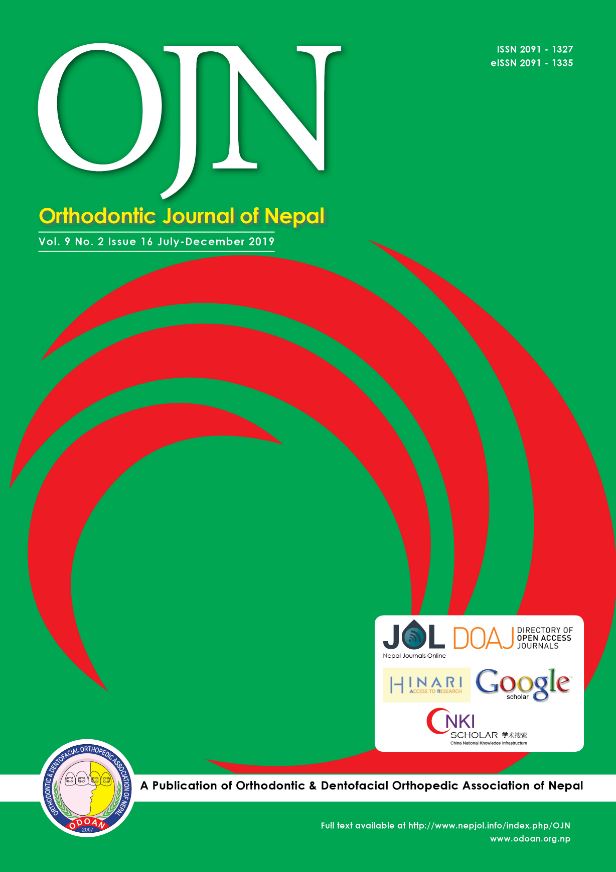Evaluation of Cranial Base Morphology of Pakistani Population in Skeletal Class I, II and III Malocclusions
DOI:
https://doi.org/10.3126/ojn.v9i2.28413Keywords:
Cranial base, Cranial base angle, MalocclusionsAbstract
Introduction: Cranial Base integrate different patterns of growth in various regions of the skull such as the nasal cavity, the oral cavity, and the pharynx. Anteroposterior jaw position is thought to be affected by cranial base growth. Although scientific literature shows conflicting results regarding both positive and negative correlation between the cranial base and skeletal malocclusions.
Materials & Method: 138 patients selected according to the Inclusion criteria were divided into three major categories depending upon ANB angle. Class I, class II group and class III group. Pretreatment lateral cephalometric radiographs were taken. Linear and Angular measurements were measured. All the data was entered in SPSS version 25 and then analyzed by using descriptive statistics including mean, standard deviation and by using inferential statistics including Pearson correlation and ANOVA test.
Result: No significant differences were recorded between cranial base deflection angles (N-S-Ar and N-S-Ba) and malocclusions groups while Anterior cranial base length S-N was found to be maximum in class III and posterior cranial base length S-Ba was greater in class I.
Conclusion: Cranial base angles N-S-Ar and N-S-Ba did not demonstrate any statistically significant correlation with three malocclusion groups i.e. Class I, Class II and Class III and their correlation was negative.
Downloads
Downloads
Published
How to Cite
Issue
Section
License
Copyright © held by Orthodontic & Dentofacial Orthopedic Association of Nepal
- Copyright on any research article is transferred in full to the Orthodontic & Dentofacial Orthopedic Association of Nepal upon publication in the journal. The copyright transfer includes the right to reproduce and distribute the article in any form of reproduction (printing, electronic media or any other form).
- Articles in the Orthodontic Journal of Nepal are Open Access articles published under the Creative Commons CC BY License (https://creativecommons.org/licenses/by/4.0/)
- This license permits use, distribution and reproduction in any medium, provided the original work is properly cited.




